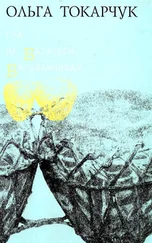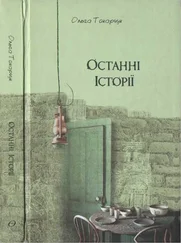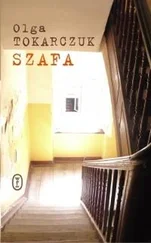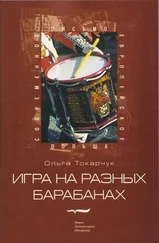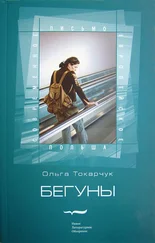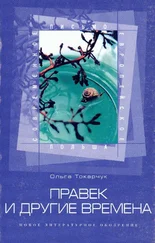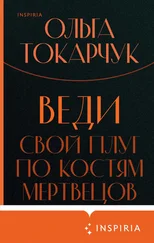Now there was a whole person – or better said, a corpse, halved lengthwise, revealing the fascinating structure of the internal organs. The kidney, in particular, distinguished itself with its remarkable allure, like a great, lovely bean, blessed grain of the goddess of the underworld.
Further on, in the next room – a man, a male body, slender, eyes that were slanted even though there were no eyelids, no skin at all so we pilgrims could see the starting and end points of the muscles. Did you know that muscles always start closer to the body’s central line, ending more peripherally, further out? And that dura mater is not the name of some sexy porn star, but rather a covering for the brain? And that muscles have starting points and end points? And that the strongest muscle in the body is the tongue?
Faced with this display made up exclusively of musculature, we pilgrims all involuntarily checked to see if what the description said was true, flexing our skeletal muscles, the muscles that obey our will. Unfortunately, there are also disobedient muscles, over which we hold no sway – there’s really nothing whatsoever we can make them do. They settled us in the distant past, and now they govern our reflexes.
Next we learned a lot about the work of the brain, and about how it’s actually the amygdala we owe the existence of fragrances to, as well as the expression of emotions, and the fight or flight impulse. To the hippocampus, meanwhile, that little seahorse, we owe our short-term memory.
The septal area is a tiny little structure in the amygdala that regulates the relationship between pleasure and addiction. This is something we should be aware of when it comes time to deal with our bad habits. We ought to know who we should be praying to for help and support.
The next specimen consisted of a brain and peripheral nerves perfectly arranged on a white surface. You could easily mistake that red design on its white background for a metro map – here’s the main station, and extending out from it, the main arterial route, and then the other lines that spread out off to the side. You had to admit – it was well planned.
These modern specimens were multi-coloured, bright; the blood vessels, veins, and arteries beautifully displayed in fluid so as to make their three-dimensional networks stand out. The solution in which they float peacefully is no doubt Kaiserling III – it turns out that’s what keeps the best.
Now we crowded around the Man Made of Blood Vessels. He looked like the anatomical version of a ghost. This was a ghost that haunted brightly lit, tiled places that fell somewhere between slaughterhouses and a cosmetics labs. We sighed: we would never have thought we had so many veins in us. It’s hardly a surprise we bleed at even a slight infringement on the integrity of our skin.
Seeing is knowing, we had no doubt about that. Most of all we enjoyed all the cross sections.
One such person-body lay before us now, cut up into slices. And this gave us access to altogether unexpected points of view.
THE POLYMER PRESERVATION PROCESS, STEP BY STEP:
– First, you prep the body as you normally would for dissection, i.e. by draining the blood;
– during the dissection you expose the parts you want to show – for example, if it’s muscle, you have to remove the skin and the fat tissue. At this stage, you position the body as desired;
– next you bathe the specimen in acetone to get rid of any remaining fluids;
– the dehydrated specimen is then immersed in a silicone polymer bath and sealed inside a vacuum chamber;
– in the chamber, the acetone evaporates, and the silicone polymer takes its place, working its way into the tissues’ deepest recesses;
– the silicone hardens but stays pliant.
I’ve touched a kidney and a liver that had been prepared in this way – they were like toys made out of tough rubber, the kinds of balls you throw for a dog to play fetch with. And the line between what is fake and what is real suddenly became very fine. I also had the rather unnerving suspicion that this technique could permanently transform original into copy.
He takes off his shoes, places his backpack at his feet, and waits now for them to start boarding the plane. He has a few days’ worth of facial hair, is almost bald, aged somewhere between forty and fifty. He looks like a guy who discovered not so long ago that he’s not really so different from everybody else – thus attaining, in other words, his own enlightenment. Traces of that shock are still visible on his face: the eyes that only look down, around where his shoes are, likely to prevent his gaze from getting tripped up by the sight of other people. No facial expressions or gestures, which he no longer requires. After a while he gets out a notebook, a nice one, hand-sewn, probably from one of those shops that charges a fortune for cheap third-world products; it says ‘Traveller’s Log Book’ in English on the recycled-paper cover. It’s a third full. He opens it up on his lap, and his black roller ball pen embarks upon a first sentence.
So I also get out my notebook and start to write about this man writing down. Chances are he’s now writing: ‘Woman writing something down. She’s taken off her shoes and placed her backpack at her feet…’
Don’t be shy, I think to the rest, all waiting for our gate to open – take your notebooks out too, and write. For in fact there are lots of us who write things down. We don’t let on we’re looking at each other; we don’t take our eyes off our shoes. We will simply write each other down, which is the safest form of communication and of transit; we will reciprocally transform each other into letters and initials, immortalize each other, plastinate each other, submerge each other in formaldehyde phrases and pages.
When we get home we’ll put our written-in notebooks with all the rest – there’s a box for them behind the wardrobe, or the bottom desk drawer, or the shelf on the nightstand. Here we have chronicled our other journeys already, our preparations, our happy returns. Raptures over sunset on a beach littered with plastic bottles; that evening in that hotel where the heat was on too high. A foreign street where a sick dog begged for food, and we didn’t have a thing; the kids who crowded around in the village where the bus stopped to cool off its radiators. There’s a recipe for peanut soup that tasted like dirty sock broth; there’s the fire-eater with the scorched lips. Here is where we kept careful track of our expenses and attempted in vain to sketch the likeness of the motif that for once captured our attention for one split second on the metro. The strange dream dreamed on the plane and the beauty of the Buddhist nun in her grey robes, standing ahead of us for a little while in line. Everything is in here, even the sailor who tap-danced on the empty pier that once sent ship after ship on its way.
Who will read it?
The gate’s about to open. The flight attendants are already closing in on the desk, and passengers plunged until now in lethargy arise and call their hand luggage to order. They search for boarding passes, set aside the papers they haven’t finished reading with no visible regret. In their heads they perform mute examinations of conscience: do they have everything, passport, ticket, and papers, have they exchanged money. And where is it they’re going. And what for. And will they find what they are looking for, have they chosen the direction they need.
The flight attendants, beautiful as angels, check to make sure we’re fit to travel, and then, with a benevolent motion of the hand, permit us to plunge on into the soft, carpet-lined curves of the tunnel that will lead us aboard our plane and onto a chilly aerial road to new worlds. That smile of theirs holds – or so it strikes us – a kind of promise that perhaps we will be born anew now, this time in the right time and the right place.
Читать дальше

